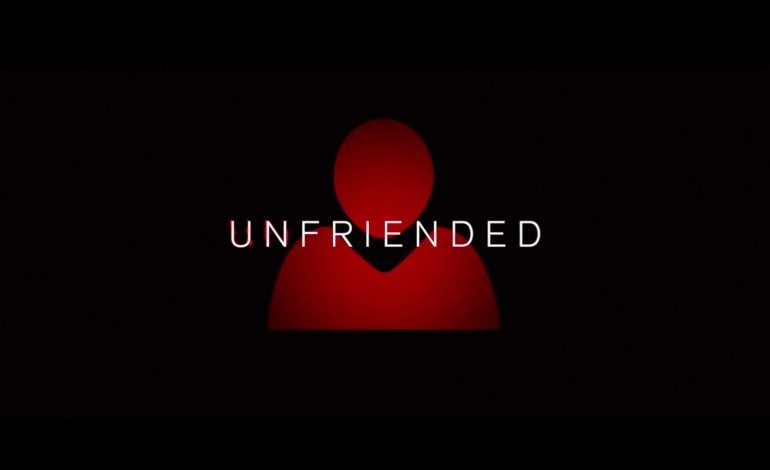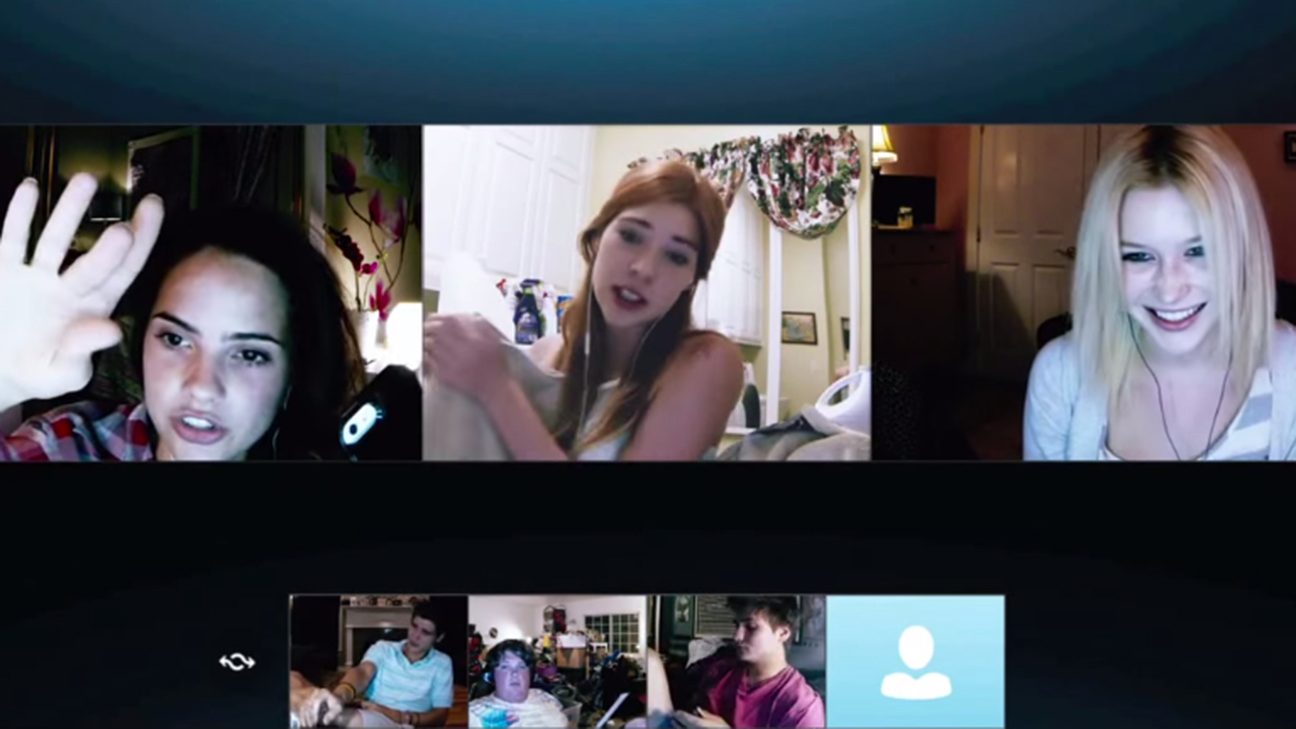

The internet is a wonderful, beautiful thing. It allows us to have access to a level of information and communication inconceivable merely a few decades ago. However, the internet also comes with catch: the ability to be cruel without expending any effort. Unfriended, from director Levan Gabriadze, is a film, with a rather unique gimmick, that takes this principle to its logical and then well beyond.
Six high school seniors are engaged in a video-chat a year after the tragic suicide of their mutual friend, Laura. Laura had taken her life after being brutally attacked (online) following the release of an extremely embarrassing video of her intoxicated and passed out. Her friends are beginning to emerge from their grief and move on when they start receiving messages from Laura’s old accounts (the usual suspects: Facebook, Instagram, iChat) in which a mysterious stranger knows things he or she could not possibly know and exerts control over the group’s computers in ways that should be impossible. Things start getting interesting, spooky, and violent.
The six characters fit rather neatly into various teen archetypes: the good girl devoted to a boyfriend just as devoted to her (Shelley Hennig and Moses Jacob Storm), the promiscuous girl (Renee Olstead), the mean girl (Courtney Halverson), the overweight nerd (Jacob Wysocki), and the hard-partying guy who is best friends with someone more stable (Will Peltz). Naturally, over the course of the film, secrets are revealed and their friendships and relationships are tested. The seventh major character in Unfriended is whoever or whatever is tormenting this collection of teenage stereotypes.
Unfriended’s plot, premise, and cast of characters may be nothing to write home about, but its style is something rather unique. The entire film is shown on the screen of the computer used by Blaire (Hennig) as she chats with her friends, frantically searches the web for clues to whatever is happening to her and her friends, and does other things typical of young people being haunted online. This style could very easily become as pervasive in horror as found-footage films, but it is probably an even more limiting gimmick; however, for Unfriended at least, it works. It supplies the film with a unique look, and cleverly turns places of relative safety (bedrooms, cyberspace) into suitably terrifying locales.
This style can be a bit unsettling, as watching someone browse the internet, without an explicit purpose, always seems a bit uncomfortable. The scenes focusing on the video-chat aspects work well, as the screen is essentially divided between two and six talking heads. Gabriadze uses his gimmick cleverly, especially when he allows for Facebook photos and YouTube videos to provide exposition. This is especially smart because it prevents necessary backstory from becoming told through inevitably clunky dialogue.
The six young actors of the cast all do good work with their rather limited characters (only Hennig’s Blaire and Peltz’s Adam truly get layers to work with). This movie provided its cast with a rather difficult job, considering that, for the most part, they are performing only using their faces, without the benefit of body language. They even manage to sell shock at the various secrets and surprises revealed about each other over the course of the film. These secrets typically involved who had slept with whom, who threw him under the bus, and who crashed her car. While these reveals might consist of the usual vapid teenaged drama, the actors reacted as one could expect teenagers to react, even if the actors looked to be in their early to mid-twenties.
Unfriended takes itself a bit too seriously at times, which is typical folly for many horror films, but has a few moments where it is downright funny. Not in the way, say, The Evil Dead (the original Sam Raimi version) is funny, but Unfriended subtly (and not-so-subtly) pokes fun at how people, especially teenagers, use their computers. Now, I die a little on the inside when reading the grammar used by most people while instant messaging, it can be funny to view how sarcasm, eagerness, desperation, etc. are conveyed via keystrokes. I also laughed when Blaire opened up her search history to show that she had recently looked up Teen Wolf (the television program). Periodically, the mysterious ghost in the machine, or whatever it is, starts playing songs with suitably comedic timing.
The film is not especially terrifying, but it does resist the urge to elaborate on what is happening on screen, leaving the explanation up to the imagination of the viewer and the screenwriters of the sequel. The runtime of Unfriended is a mere eighty-something minutes, but every minute of that is used to either forward the plot or establish character relationships, which are set up well after only a few minutes. So well, in one case, that Unfriended actually manages to undercut one of the supposedly shocking reveals later in the film. This trim runtime helps keep Unfriended from ever being boring, even when it is being predictable.
Verdict: 3 out of 5
As a horror film, Unfriended is only okay. But as an experiment in filmmaking? A rousing success. The successful use of the internet as a medium, not unlike the home-videos of the nineties, will probably herald a considerable number of imitators, even if this particular gimmick probably has fewer uses. Unfriended is well-acted, moderately frightening, and sporadically funny, so it is worth a watch for those who are fans of the genre, and, for those intrigued by its clever style, there are worse ways to spend an hour and a half.



